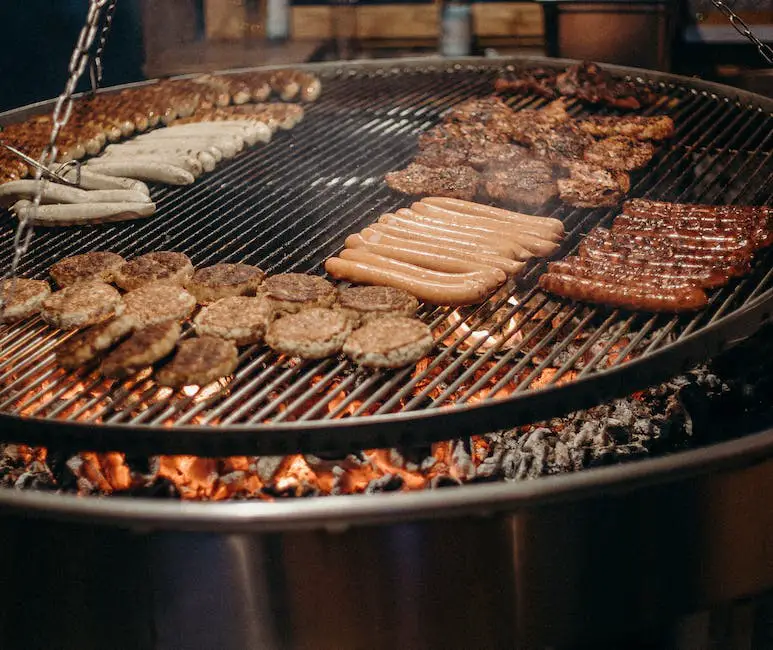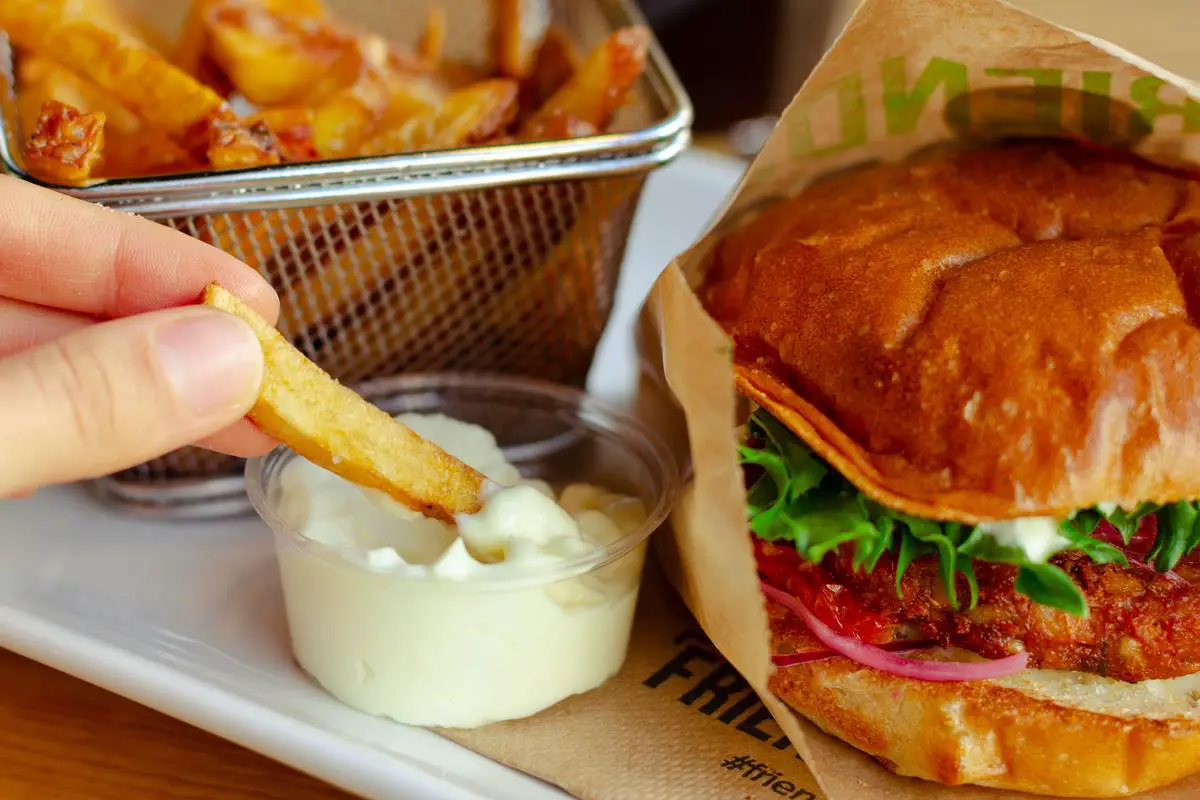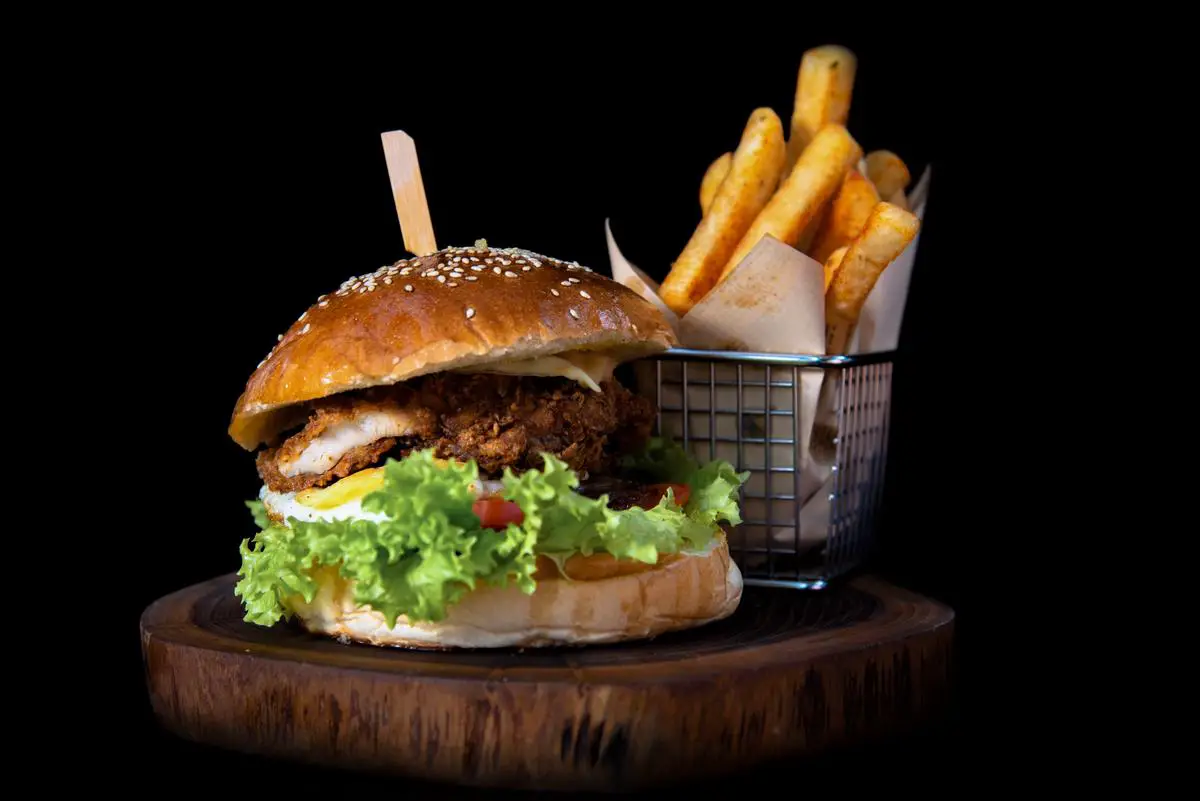South Africa boasts a rich and diverse culinary heritage, with an array of unique and flavourful dishes. One such dish is Boerewors, a traditional South African sausage deeply rooted in the country’s history and culture. With fast food chains such as McDonald’s entering the South African market, it has become increasingly important for these companies to adapt to the local palate. The Spicy Boerie Burger at McDonald’s is one such attempt to cater to consumer tastes, incorporating the distinct flavours of Boerewors and the essence of South African cuisine into a familiar product.
Origins of Boerewors
The tradition of making boerewors, a South African sausage, can be traced back to the 17th-century European settlers in the region. The word ‘boerewors’ combines the Afrikaans words for ‘farmer’ and ‘sausage’.
This sausage consists of coarsely minced beef, seasoned with spices like coriander, cloves, and nutmeg. It is then formed into a spiral and grilled on an open flame to give it a smoky flavour. Boerewors is often enjoyed at social gatherings like braais and sporting events.
The South African Spicy Boerie McDonald’s offers a modern and convenient way to enjoy this traditional delicacy. It consists of a spicy boerewors patty served on a bun with tomato and onion relish, known as chakalaka.
Overall, boerewors holds a special place in South African cuisine and is a symbol of the country’s heritage and camaraderie.

Spices and Flavours in Boerewors
As a tantalising and delicious part of the nation’s culinary identity, boerewors is an essential component of South African cuisine. Bursting with rich flavours and aromatic spices, it is traditionally enjoyed at barbecues (or ‘braais’) and has become a staple meal for many South African households. The South African Spicy Boerie McDonald’s menu item merges the beloved classic with modern dining, offering a convenient twist on the traditional dish.
The essential elements of a traditional Boerewors include minced meat – usually beef, with pork, mutton or a combination of these – and a unique blend of spices. The most common spices found in a typical Boerewors are coriander, black pepper, nutmeg, cloves, and allspice. In some variations, other spices such as paprika, cumin and even chilli peppers may be added to enhance the flavour profile and create a spicier dish.Regional differences in Boerewors recipes largely come down to the variety of South Africa’s diverse cultural influences, along with the different types of herbs, spices and meats available in each area. For example, in the Western Cape, you will find “Cape Malay” spices feature prominently in their Boerewors, reflecting their historical culinary influence from the Malay and Indonesian settlers in the region. Cooks in the Eastern Cape, on the other hand, may tweak their Boerewors recipe with different types of dried peppers, which are abundant in the area.The popularity of South African-inspired dishes including Boerewors has even caught the attention of international fast-food chains such as McDonald’s. The South African Spicy Boerie at McDonald’s delivers an approachable and delicious fast-food variant of the traditional Boerewors, made using high-quality beef and flaunting the authentic spices and flavours that are characteristic of the dish. By incorporating the distinct taste of Boerewors into its menu, McDonald’s showcases South Africa’s rich culinary traditions to the masses, invariably creating a new platform for Boerewors aficionados to enjoy their favourite delicacy.The wide array of spices and flavours that go into creating a traditional Boerewors not only add to its legacy as a South African food, but also serve as a testament to the nation’s diverse cultural heritage. As the demand for Boerewors and South African flavours continue to grow, both locally and abroad, it is captivating to witness how fast-food chains like McDonald’s adapt to provide their customers with authentic flavours and exceptional culinary experiences.

McDonald’s Introduction to South Africa
In 1995, McDonald’s, the world-renowned fast-food chain, entered the South African market for the first time. With the end of apartheid and an increasingly globalised world, McDonald’s saw immense potential in the South African region for business expansion. Since then, the company has rapidly grown in the country, becoming a significant part of the South African fast-food landscape. Today, with more than 300 outlets across South Africa, McDonald’s has successfully established its presence in the region, even incorporating local flavours like the spicy Boerewors into their menu offerings.
An essential element of McDonald’s success in South Africa lies in the company’s ability to adapt and cater to local tastes and preferences. As South Africans have a strong culinary culture, McDonald’s decided to include several South African inspired dishes into their menu. One such dish that McDonald’s introduced in South Africa is the Spicy Boerie Burger, a delicious and flavourful creation that reflects the essence of traditional South African cuisine.
The Spicy Boerie Burger is a McDonald’s adaptation of the traditional South African Boerewors, which is a type of sausage popular in the local cuisine. Boerewors is a combination of beef and pork, mixed with different spices such as coriander, pepper, and cloves, giving it a unique taste. The McDonald’s version of this iconic dish is a beef and pork patty infused with Boerewors spices and topped with tomato, lettuce, and a spicy mustard mayonnaise, all on a freshly toasted bun. By incorporating this dish into their menu, McDonald’s has shown a strong commitment to respecting and celebrating South African culture and traditions.
The introduction and success of the Spicy Boerie Burger at McDonald’s also provided an excellent opportunity for the company to engage with local suppliers and foster a sense of community. McDonald’s worked closely with local farmers and businesses to source the best quality ingredients for their Spicy Boerie Burger, ensuring that the menu item would satisfy the diverse palate of South African customers.
Overall, the introduction of the Spicy Boerie Burger is a prime example of McDonald’s ability to innovate and adapt to local tastes and preferences, as well as demonstrating their commitment to supporting local communities. By incorporating familiar South African flavours into the fast-food experience that McDonald’s is renowned for, they have produced a new classic that remains popular among South African customers.

Photo by polygraph on Unsplash
Creation of the Spicy Boerie Burger
McDonald’s, one of the world’s leading fast-food chains, is recognised for tailoring and devising new menu items to cater to the tastes and preferences of the regions in which it operates. In South Africa, the Spicy Boerie Burger was introduced as an innovative addition to the McDonald’s menu. The inspiration for the Spicy Boerie Burger came from a traditional South African dish called boerewors; a type of sausage made primarily from beef and a blend of spices. By combining these local elements with the fast-food experience that McDonald’s is known for, they have created a new regional favourite for their South African customers.
To develop the Spicy Boerie Burger, McDonald’s worked closely with local suppliers and chefs, ensuring that the flavors remained true to the original South African dish while still maintaining the familiar McDonald’s taste. The burger features a beef patty seasoned with boerewors spices, topped with grilled onions, lettuce, tomato, and a generous dollop of spicy mayo, all nestled in a soft hamburger bun. This creation was a perfect blend of the traditional South African flavors and the iconic McDonald’s burger.Upon its introduction, the Spicy Boerie Burger received a warm response from South African customers. This addition to the McDonald’s menu reinforced the company’s commitment to cater to the tastes of the local population, further solidifying its position as a global fast-food brand with a local touch. The Spicy Boerie Burger not only appealed to locals, but also offered tourists and visitors a unique treat, through which they could experience a taste of South African culture.In addition to the Spicy Boerie Burger, McDonald’s South Africa introduced other local favorites to its menu. These menu items include the McFeast Spicy, a spicy fried chicken burger, and the Boerie and Egg breakfast bun, which features a boerewors spiced patty and fried egg. These offerings demonstrate McDonald’s strategy of understanding local food preferences and adapting their menu accordingly, to satisfy customers’ palates while allowing them to enjoy familiar McDonald’s products.Despite the tremendous success of the Spicy Boerie Burger, McDonald’s relentlessly innovates its offerings in South Africa and across the globe to cater to the ever-changing preferences of its customers. This constant innovation and attention to local tastes solidify the brand’s foothold in the global fast-food industry. As more and more patrons seek unique culinary experiences, McDonald’s South Africa is likely to persist in offering traditional flavours, such as the Spicy Boerie Burger, to satisfy the demands of its diverse customer base.

Impact on McDonald’s South African Market
About the Spicy Boerie Burger
The Spicy Boerie Burger, a McDonald’s offering specifically tailored to South African tastes, quickly became a popular choice among fast food enthusiasts when it was introduced to the market. This exciting dish showcases the brand’s commitment to incorporating local flavours in its menu, ensuring an authentic dining experience for its customers.
Local Appeal and Broader Customer Base
One of the significant ways in which the Spicy Boerie Burger impacted McDonald’s South African market was by giving the brand greater local appeal. This strategy of blending global and local flavours not only boosted customer satisfaction but also further entrenched McDonald’s presence in the South African fast food industry as a competitive player. Another significant impact of the Spicy Boerie Burger was its ability to attract South African consumers who might not have been regular customers of McDonald’s. By offering a burger with a unique taste profile that included local spices and ingredients, such as the boerewors sausage, McDonald’s piqued the interest of consumers who were on the lookout for both familiar and novel dining experiences. As a result, the Spicy Boerie Burger contributed to a broader customer base for McDonald’s in South Africa and expanded the brand’s overall market share.
Increased Brand Visibility and Enhanced Customer Engagement
The introduction of the burger also garnered significant media attention and created a buzz around the McDonald’s brand throughout the country. As people discussed and debated the merits of the Spicy Boerie Burger online and offline, the effect was both increased brand visibility and enhanced customer engagement for McDonald’s South Africa.
Sustainable Sourcing and Community Engagement
However, it is also important to consider the role of sustainable sourcing and community engagement when assessing the impact of the Spicy Boerie Burger on McDonald’s South African market. McDonald’s must carefully balance its ambitions for offering the Spicy Boerie Burger alongside its commitments to supporting local producers and being a responsible corporate citizen. By demonstrating its dedication to sustainably sourcing local ingredients and collaborating with community partners, McDonald’s can further bolster the success of the Spicy Boerie Burger while strengthening its relationship with the South African market.
Conclusion
In conclusion, the Spicy Boerie Burger has undoubtedly had a significant impact on McDonald’s South African market, driving increased sales, brand visibility, and customer satisfaction. By incorporating local tastes and focusing on responsibly sourced ingredients, McDonald’s has managed to establish itself as a major player in the South African fast food landscape with innovative menu offerings like the Spicy Boerie Burger.

Photo by picoftasty on Unsplash
Comparison to Other Local Fast Food Offerings
One notable aspect of South African fast food is its adaptability to local tastes, which has encouraged the creation of unique menu items such as the McDonald’s Spicy Boerie Burger. This burger has been meticulously designed with South African taste buds in mind and features a distinctive blend of spices and flavours that are both familiar and appealing to local customers. By integrating regional elements, McDonald’s provides an authentic dining experience that caters to its South African clientele’s preferences.
In terms of popularity, the Spicy Boerie Burger has found its place among other South African fast food offerings. Drawing on the strong affinity for boerewors – a traditional South African sausage that is widely enjoyed – McDonald’s has managed to create a burger that retains its global brand identity while simultaneously appealing to local tastes. As a result, the Spicy Boerie Burger has garnered a loyal following among customers, setting it apart from other fast food options available in South Africa.Competition in the South African fast food market can be fierce, with a range of local and international fast food brands vying for consumer attention. The Spicy Boerie Burger faces competition from more-established South African fast-food chains such as Nando’s, Steers and Chicken Licken, which also offer unique menu items that have been specifically tailored to cater to local preferences. Although McDonald’s enjoys the advantage of being a recognised global brand, maintaining a competitive edge in the market requires continuous innovation and adaptation to cater to evolving customer tastes.In recent years, the emphasis on healthier fast-food options has also affected the South African market, as consumers become increasingly more conscious of their dietary choices. McDonald’s Spicy Boerie Burger is not immune to these trends, despite its unique flavour profile. As such, the burger must not only compete on taste but also on nutritional value and portion sizes, factors that influence customer decisions but may affect the perceived authenticity of traditional, local flavours.In conclusion, the McDonald’s Spicy Boerie Burger has successfully managed to carve out its niche within the South African fast food market, owing in large part to its regional adaptability and focus on local tastes. While competition remains stiff, the burger has demonstrated a consistent popularity among local customers, reflecting its appeal as more than just another fast-food option. By striking a balance between global brand recognition and local appeal, the Spicy Boerie Burger has established a unique identity amid a diverse array of competing fast food choices in South Africa.

Photo by rollelflex_graphy726 on Unsplash
Future Possibilities and Predictions
Given the growing popularity and success of the Spicy Boerie Burger in South Africa, it is not surprising that future possibilities and predictions relating to this unique McDonald’s offering make for interesting speculation. As consumer demand for culturally-inspired fast food options continues to rise, the Spicy Boerie Burger could potentially expand beyond the borders of South Africa, eventually becoming a fan favourite in various global markets. It would not be unexpected if, in the coming years, the delicious blend of boerewors, chakalaka, and pap becomes a well-known combination, far beyond South African shores.Another potential outcome of the Spicy Boerie Burger’s thriving popularity is that McDonald’s may seize this opportunity to branch out and introduce more traditional South African food items to their menu. This move would not only serve to entice customers who are already fans of the Spicy Boerie Burger, but also introduce a wider audience to the various tasty and unique flavours of South African cuisine. By diversifying their offerings, McDonald’s could very well establish itself as a key player within the traditional South African fast-food space.One possibility for the future of the Spicy Boerie Burger is the introduction of various alternatives or customisable options to cater to different dietary requirements and preferences. As more and more consumers adopt lifestyles such as vegetarianism, veganism, and more, it is crucial that fast food chains ensure they are inclusive and adaptable. The creation of a vegetarian or vegan version of the Spicy Boerie Burger could help McDonald’s tap into this growing market and ensure that an even larger audience is able to enjoy this South African inspired treat.The concept of the Spicy Boerie Burger also opens the door for collaboration between McDonald’s and other brands within the South African food and drink industry. For instance, a co-branded meal deal featuring the Spicy Boerie Burger alongside a locally-produced beverage or snack might not only build goodwill between local brands and McDonald’s, but also create an opportunity for these businesses to become more well-known on a global scale.Additionally, the incorporation of technology might also impact the future of the Spicy Boerie McDonald’s. With the increasing use of mobile apps and online ordering systems, there may be added emphasis on customers being able to customise their meal to their liking; allowing them to choose the level of spice in their boerewors, the type of chakalaka, or even the thickness of the pap in their Spicy Boerie Burger. This level of personalised ordering could become a selling point for McDonald’s and serve to further elevate the popularity of this South African inspired dish.

Photo by dusantizic on Unsplash
As the global fast-food industry continues to expand, it is essential for brands like McDonald’s to innovate and cater to the evolving demands of their customers. The Spicy Boerie Burger represents a successful foray into South African cuisine, embracing the flavours and heritage of the country, while still remaining true to the brand’s identity. Through adaptation and open-mindedness in exploring new culinary possibilities, McDonald’s has successfully incorporated traditional South African tastes into their menu, paving the way for potential future offerings and further strengthening their connection to the local market.